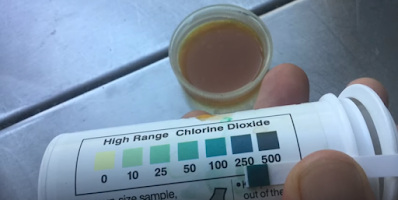Chlorine dioxide is commonly used to disinfect water. When this gas is used in small quantities to disinfect water and is also safe doesn't lead to health risks. However, ClO2 is a disinfectant similar to bleach and can be very dangerous.
ClO2 is a disinfectant that kills viruses, bacteria and fungi. But, it can damage red blood cells at high doses and the lining of the gastrointestinal tract.
Antiviral activity: CLO2 is antiviral and destroys the proteins on the outside of viruses and degrades the virus. Chlorine dioxide gas is very effective against a lot of things such as measles, human influenza, human herpes, influenza, influenza A, etc. CLO2 solution inactivated human and money rotavirus and hepatitis A.
When you are looking at drinking water safety, ClO2 is often used as a prooxidant for the water. If you add it to the water before oxidation happens, you will be able to prevent bacteria and algae from developing in future stages of water treatment, which is a key element of making sure that the water is safe to drink. Also, any floating particles in the water are oxidized when coming into contact with CLO2 that makes sure that any turbidity of the surface water is removed.
In case a biofilm forms in the water distribution network, then ClO2 is the only chemical that is able to effectively remove biofilm that makes sure that pathogenic microorganisms are killed. As chlorine dioxide can remain active in water as long as 48 hours, and will present future buildup of biofilm. If we do not apply chlorine dioxide during the pre oxidation phase of water treatment, then there is a higher risk that bacteria and viruses will create that only serves to lessen the quality of the drinking water and make it more dangerous to drink.
No matter whether you want to use ClO2 as a water disinfectant, for taste and odor control or even want to use Chlorine dioxide for sanitizing, it is very vital that you must be very careful when using chlorine dioxide is dangerous in its pure form, you must adhere to the right safety measures prior to you handling the substance.



